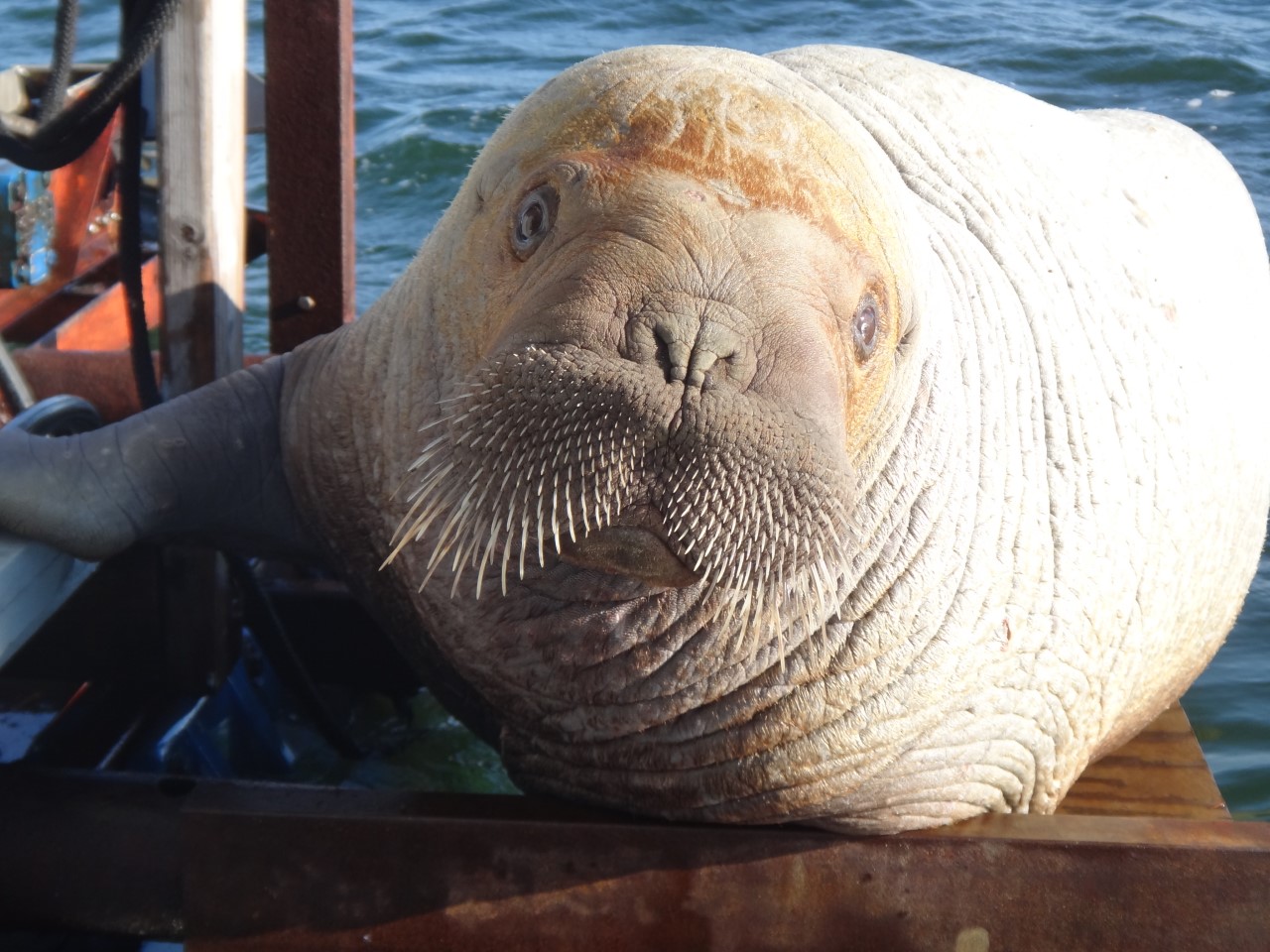
Updated September 27, 2021
My friend, Don Degener, spent several seasons in Nome, Alaska dredging for gold, much like the Pomrenkes and Emily and others on the Bering Sea Gold TV series. One day, July 22, 2012, he had just finished a dive and was climbing the ladder back onto his dredging barge, the Maverick. The date sticks in his mind because it is the same day that his much-beloved mother died at the age of 99. As he mounted the steps he was feeling the pain of a mistake he had made a little earlier while still on the seabed sucking sand, rocks, and hopefully gold into his 8-inch dredge. A rock had managed to whack and pinch his thumb between it and the edge of the dredging hose mouth and broke the knuckle of it. While feeling the pain and lamenting the impact it would have on the continuing work, he noticed a presence behind him. Turning around to check whether it was a phantom or something other than the forces of the sea that he had felt, he discovered a juvenile walrus looking him in the face. He quickly got aboard and hustled for his camera. Meanwhile, the walrus also climbed on board. Passing the camera to his partner, fellow diver Joe Khachadourian, he jumped back in the water and approached the walrus warily hoping not to frighten his new friend off.
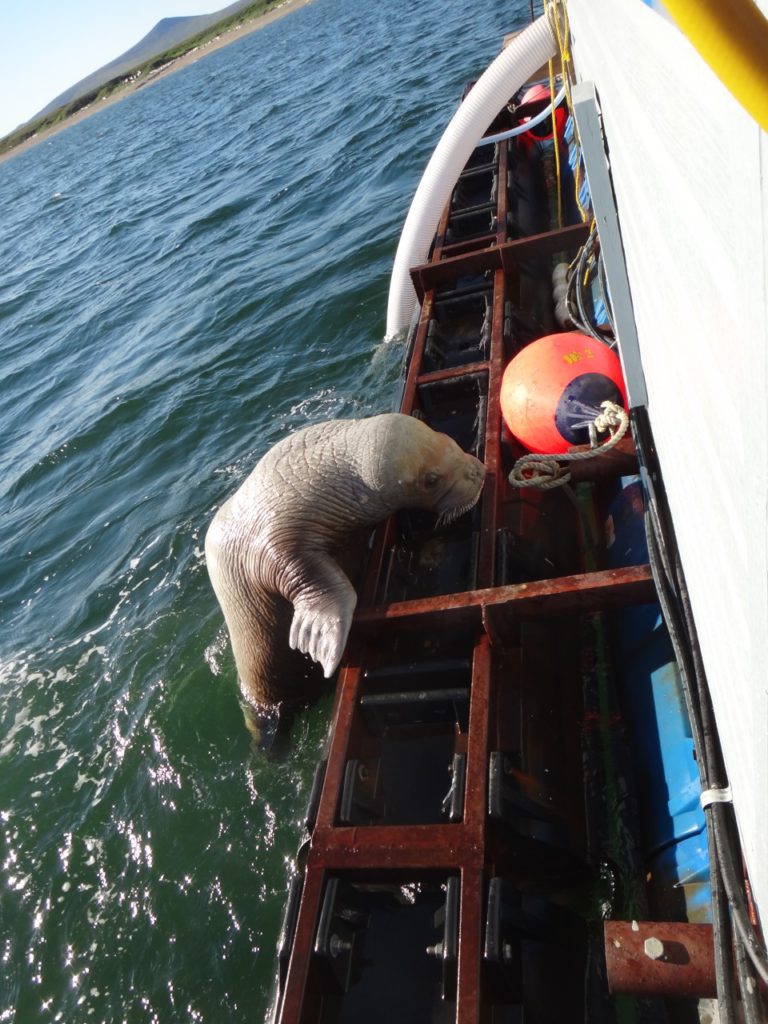
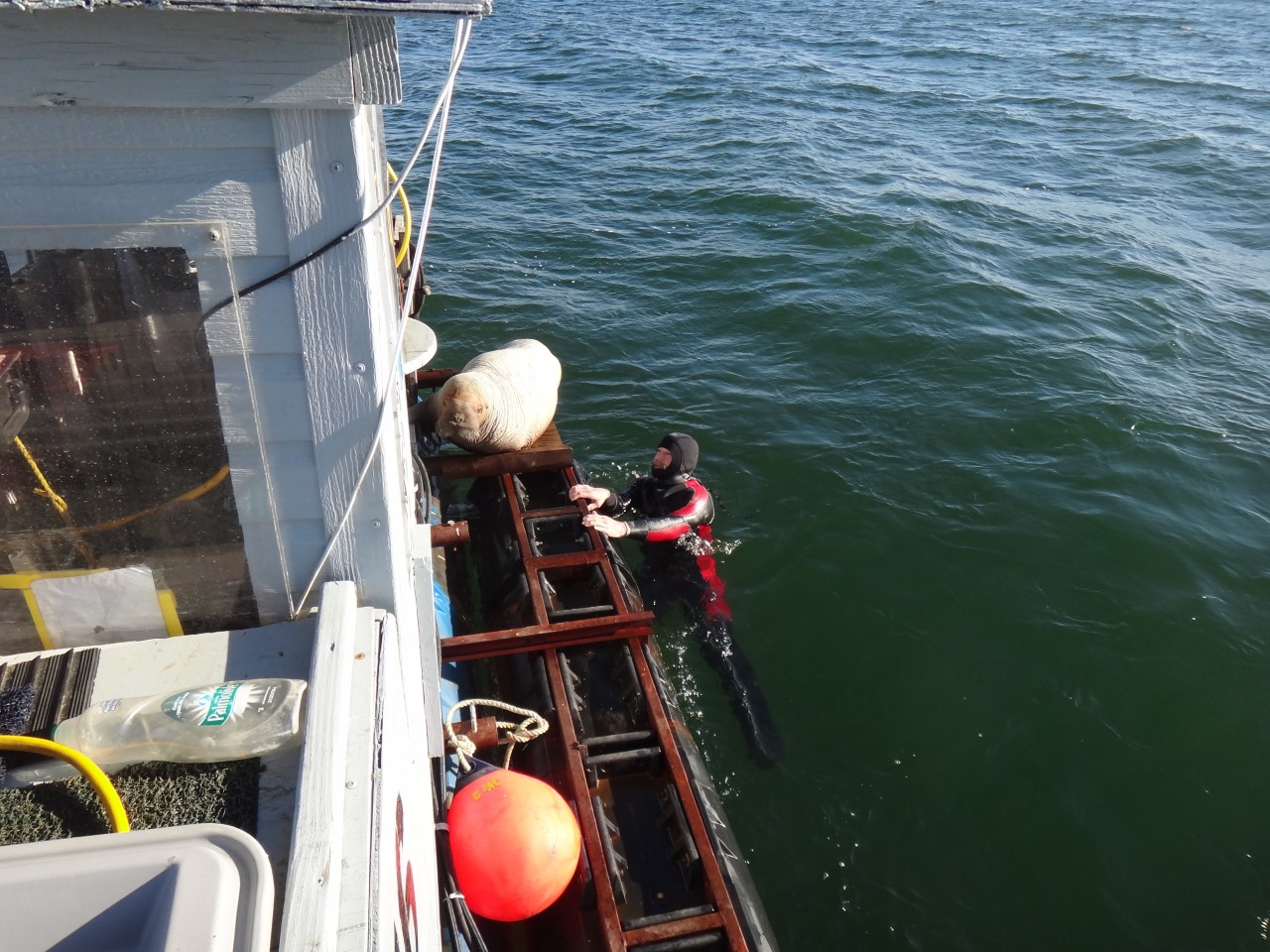
The walrus had no fear of Don whatsoever. It stayed there in position as Don got closer. The first thing that impressed him was that the fore flippers had five visible digits with cuticles that were remarkably more similar to those of a human than he had previously imagined. As he petted the approximately 400-pound juvenile he was also amazed that there was thick nappy hair rather than a more blubbery sort of surface.
It was 9 pm and time to start the hour and a half of sailing to get back to the port in Nome. Their day had started at 5:30 am and they really needed to get going. Fortunately, it is still light pretty much all day at that time of year, so operating in the dark wasn’t a worry, but getting back, unpacking, and getting a bite to eat and some sleep before starting over again the next day was a concern. They started up the motor and proceeded toward home. This didn’t seem to motivate the walrus to disembark. Prodding and simple pushing were also not enough. It took Don bracing his back against the wall to the wheelhouse and feet on the side of the animal and pushing with all his strength to get it back into the sea from whence it came. As they propelled away the “little” guy tried to stay with them and re-board until they reached a speed of 4-5 knots and the boat was able to pull away. Research indicates that the average speed for a walrus is about 4-5 knots with maximum bursts of about 21 knots. Perhaps a juvenile is not thus equipped or perhaps this lone walrus was weakened during its time away from its herd. In any event, this was the last time this animal or any other walrus was seen during Don’s time there.
Walruses are known to feed primarily on mollusks, such as bi-valve clams, but also eat worms, gastropods, cephalopods, crustaceans, sea cucumbers, and other soft-bodied animals and even fish such as polar cod. It would seem something appropriate was available to sustain it. I would guess that by its size that it was mature enough to have some sort of capability to survive. Hopefully, it found its herd.
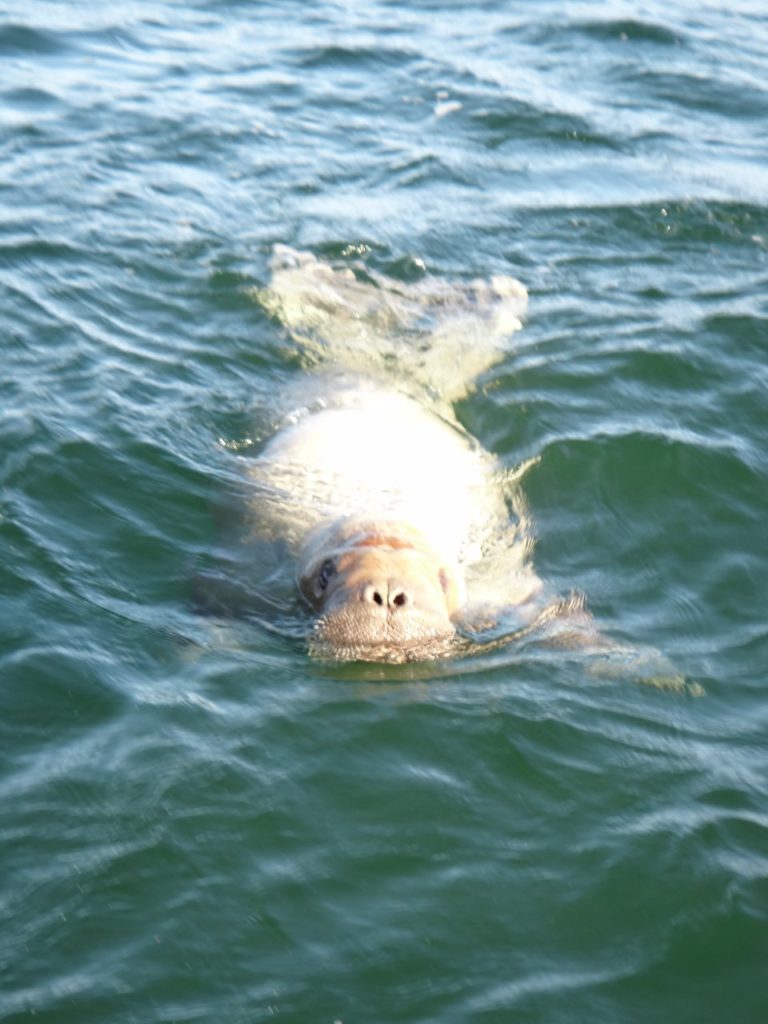
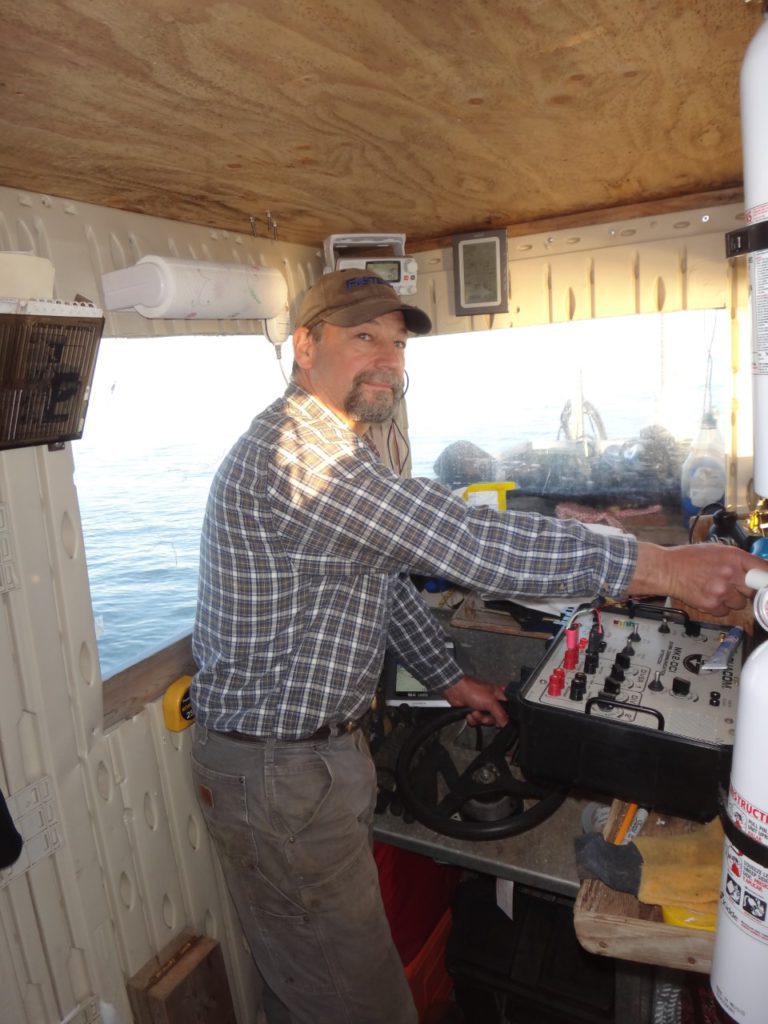
Back in town with everything stowed and secure for the night, Don ventured to an after-hours hangout, the Polaris Hotel. His boss, Bob Scott, and other miners including some of the guys from the Christine Rose from the TV program were there. When Don told them the story of the walrus, none believed him until he showed the photos. They all indicated this was a never-before-seen phenomenon. A little later when buying a few things to take home from a small convenience store, Don related his story to the two native Alaskan proprietors there and was informed he was “full of shit, never would happen” and then produced the photos for them proving otherwise.
The Maverick is a 30-foot craft powered by a 50-hp Yamaha motor. Its dredge uses an 8-inch hose that lifts materials from the bottom to a sluice box on the deck that sorts out the heavier gold from other stones and finer substances. The company Don worked for at that time had two other units that were using a 10-inch hose that could lift significantly more. Divers use a full face mask and regulator system running from a hose to a low-pressure compressor.
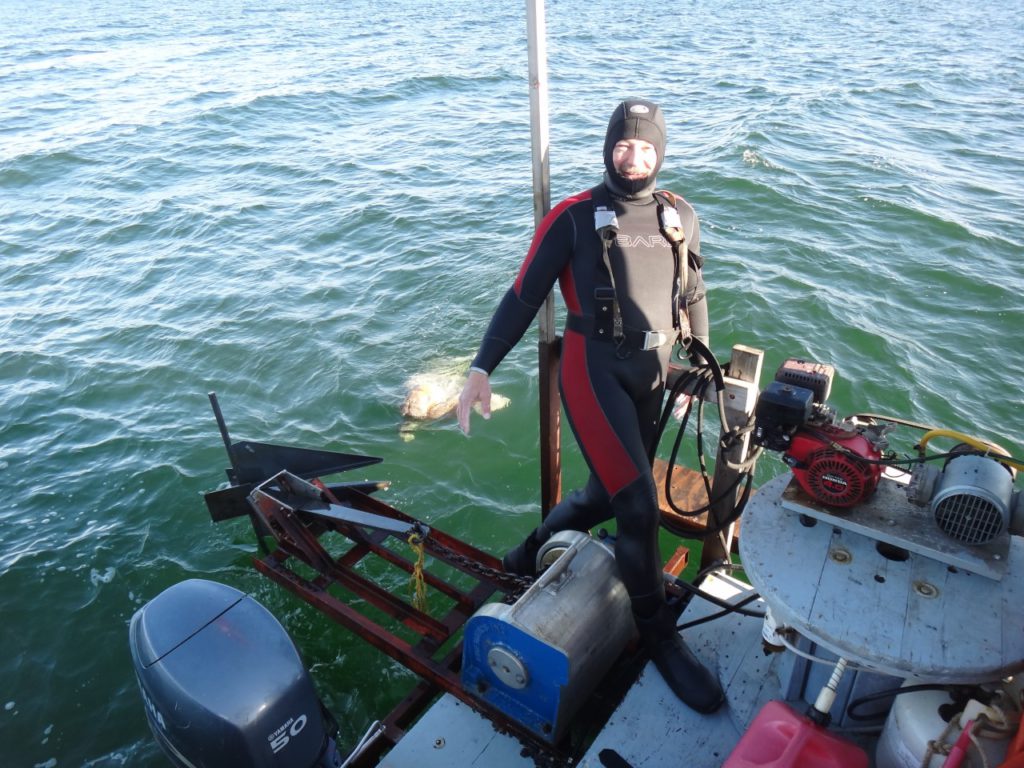
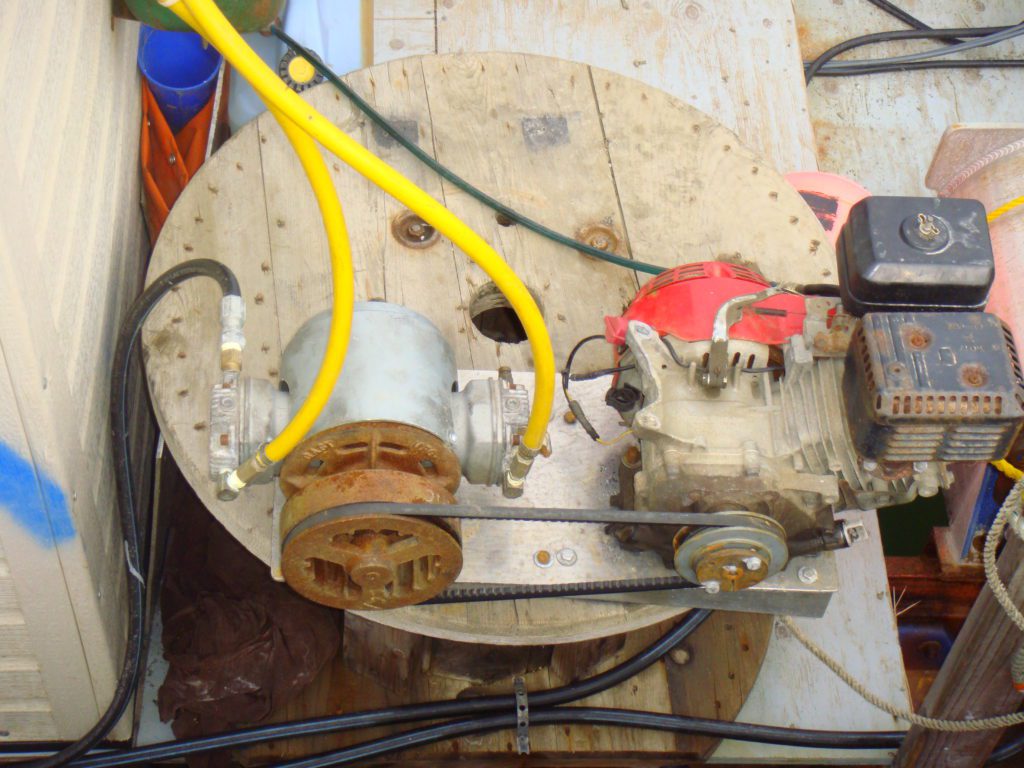
One diver submerges at a time and has an intercom to communicate with the surface. When one diver is down, the other maintains the equipment and supports the diver below. If you have watched the TV series “Bering Sea Gold” you will have noticed there seem to be a lot more than two people on board doing the work and providing a lot of chat and drama for the audience at home. On the Maverick, there was only Don and his mate, Joe. Joe is a relatively famous surfer from California and later Hawaii who has a long-term relationship with Jack O’Neill of wetsuit and surfboard fame, and his sons. Joe used an O’Neill 7 mm wetsuit that he picked up from them to test. Don used a Bare 6 mm wetsuit, booties, mittens and his own jerry-rigged warm water suit over the top. Water temperatures in July range from 45-48 degrees F. Air temps were from 45 to 60 degrees. He also used an OTS Guardian full face mask and regulator system.
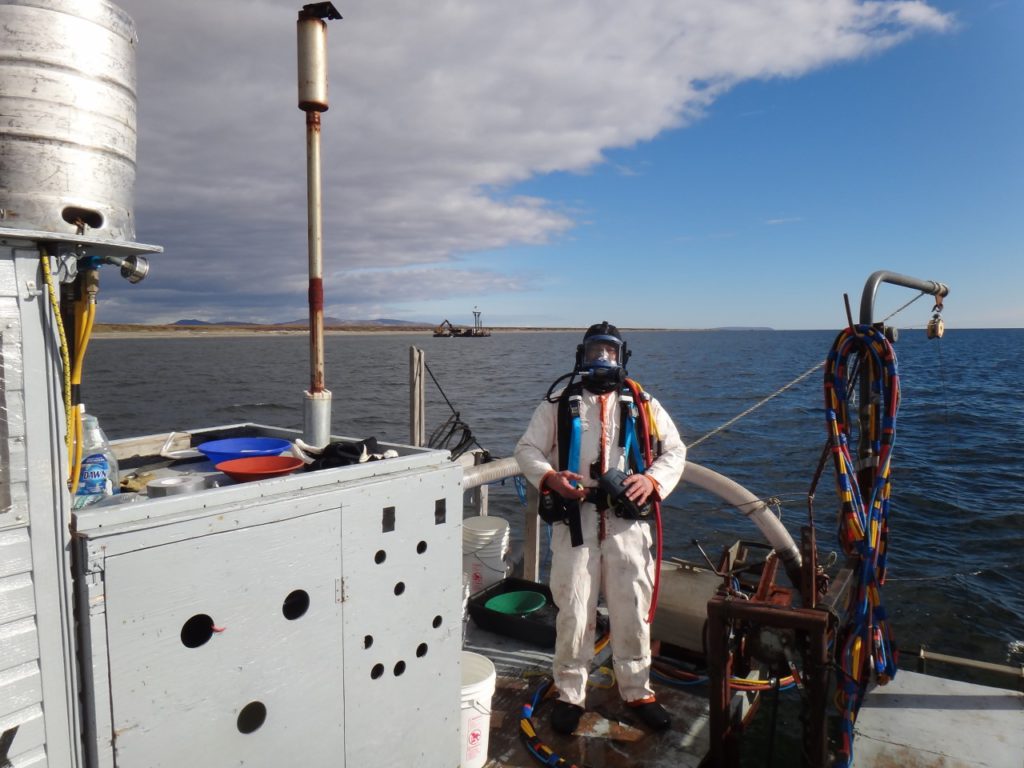
That’s the Christine Rose from “Bering Sea Gold” in the background.
OTS Guardian Full Face Mask with Regulator
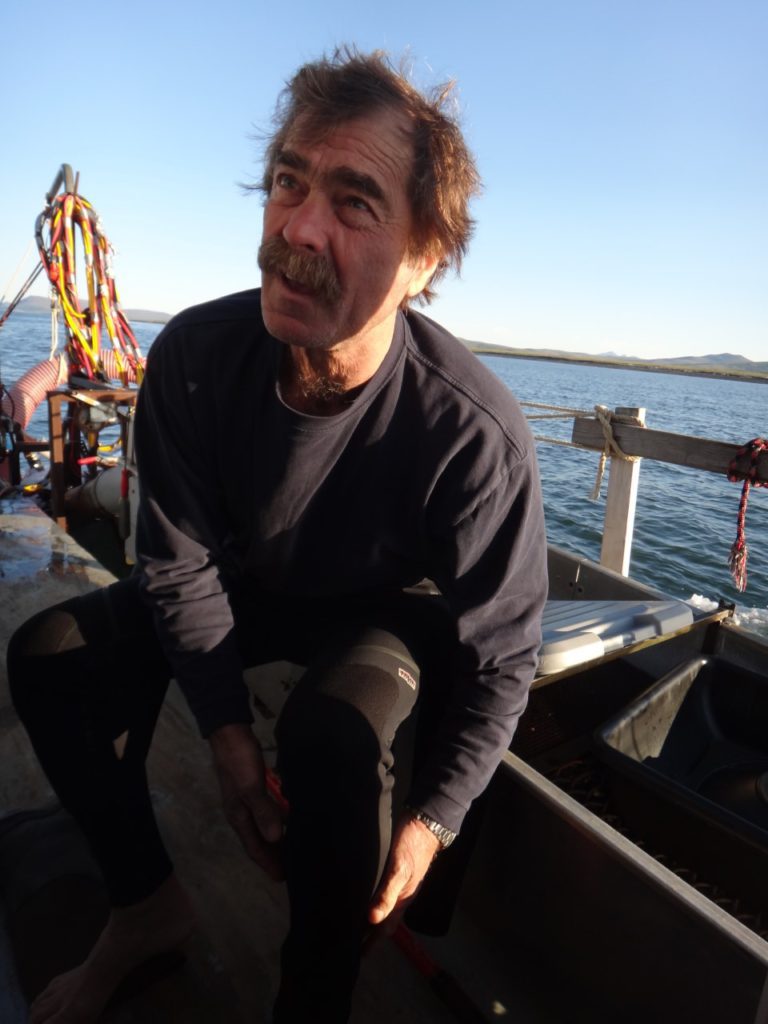
The workday usually started at around 5:30 am when Don would grab a quick bite and then check the boat. They tried to be underway by 6:30. At a cruising speed of 4-5 knots it took up to 2 hours to reach the sites they dredged within the owner’s claim. Each diver spent 4-6 hours per day submerged to depths of up to around 30 feet, but generally shallower. Decompression sickness was not a major concern. Getting tired was. Wrestling with the heavy dredge, the other gear, and the sea takes its toll on young men much less those in their 50s and 60s.
Here is the clean-up from that week’s efforts:
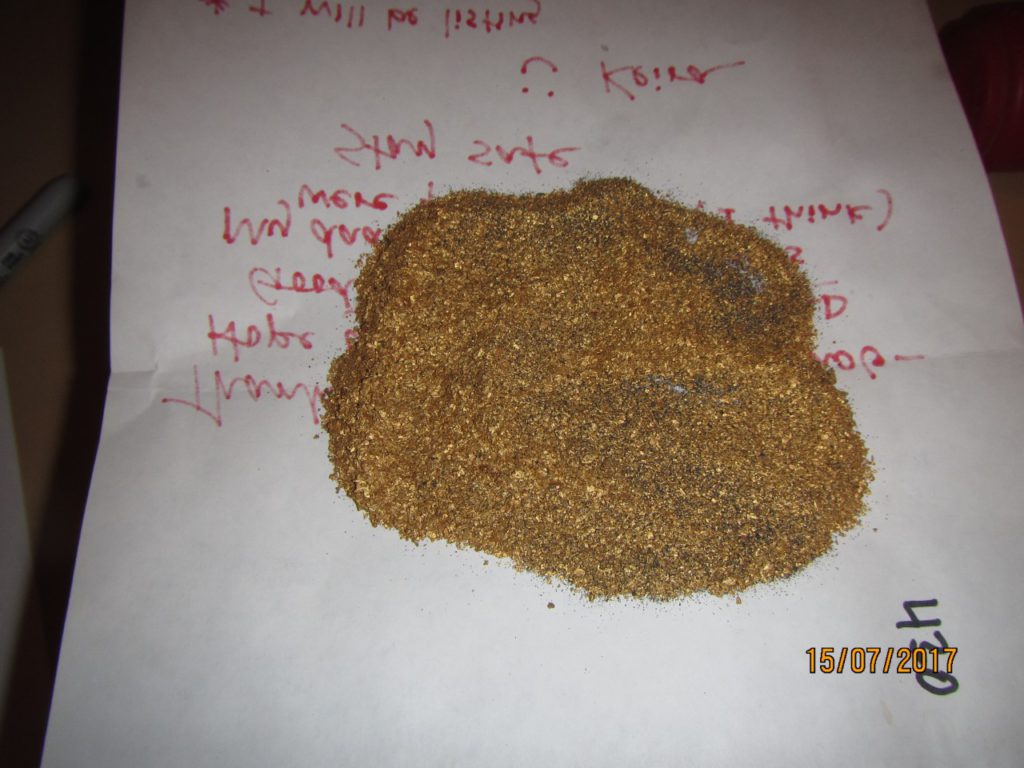
The two divers share about half.
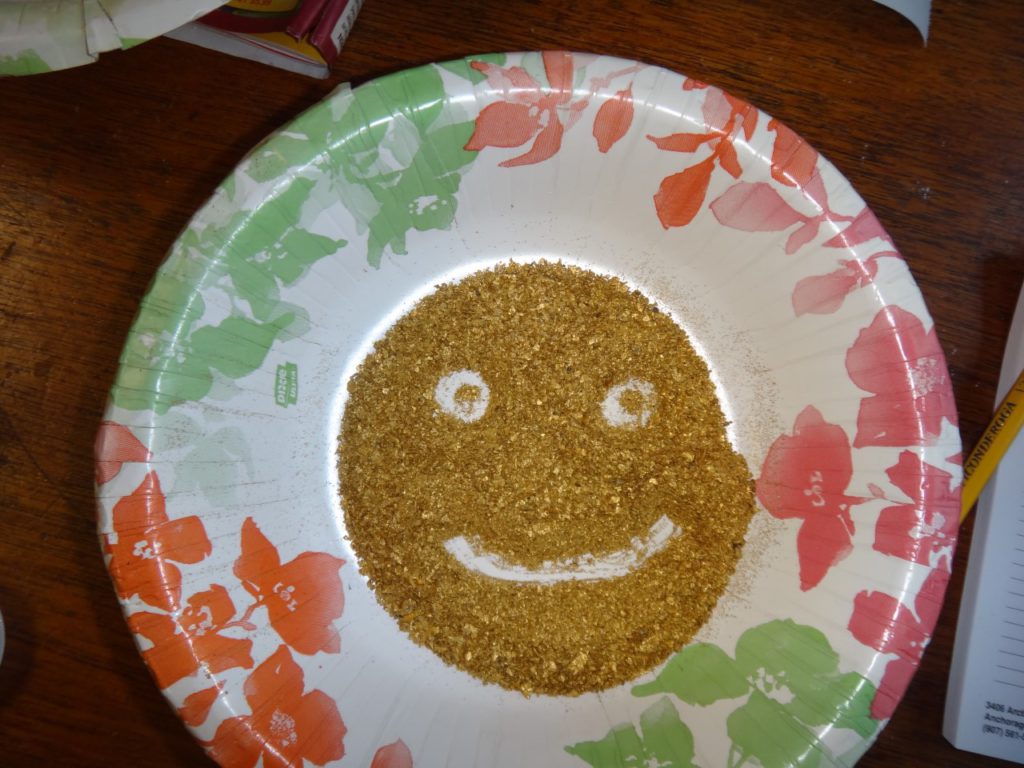
I hope you enjoyed this story. If you have some ideas or questions, I’d love to see them. Please write them in the comments section. If there is no comments section directly below, click here: >>comments<<

Hey!! This is a GREAT story and that walrus is so damn cute!! I’ve also wanted to be friends with a walrus and this is something that most people can’t get a chance to livve through.
I’m impressed with the joy of this story and I think the content is not only relative, but also quite fun and there should be more content like this between product-related.
Thanks a lot. I am really glad you liked the story.
My friend, Don, the guy with the walrus, has many more stories from his years of commercial diving and I have a few, as well. As time goes on I will add some more, so please keep in touch.
Joe
Hi. Thanks for the article. It’s a great story and gives me some idea about the life there in Alaska doing that kind of work.
I am a commercial diver and getting work now is a little sketchy. Do you know or could you ask your friend about job prospects there in Alaska?
I”m glad you enjoyed the post, Greg.
I’ll base my answer to your question on what my friend has advised me. The season for most of the diving there starts in May and ends in September or October, depending on the weather. There is a much more limited amount of work after things ice over. It is expensive to live there with high rent and food costs. In fact the availability of reasonable housing is quite limited. If you are looking for a job with one of the established companies, it would not be very likely you would get hired just by showing up. There are a number of divers and beach dredgers that are living a marginal existence there who are ready to fill openings for divers in the established outfits.
Overall, your best bet would be to find a way to contact a company before going up there.
I hope this is of some help. Good luck!
Joe
Thanks a lot. I’ll do some research here and try to get an invitation before making the treck up there to Nome.
Greg
Good luck, Greg.
Wow Joe.
I really enjoyed reading your post. I did not know that gold digging was possible in Alaska.
Usually taught that gold reserves was only in the middle west.
Boy I was wrong.
I am night bird, so any kind of waking up before 10 am is something I could not do :).
Probably could not do gold digging early in the morning.
Definitely enjoyed the pictures with the walrus though.
Peace,
Strahinja
I’m glad you enjoyed the story, Strahinja. Thanks for your comments.
Joe
Awesome story! I worked on a gold dredge in Sand Point Alaska and we had an encounter with a grown walrus. One of our guys was diving in the harbor doing some maintenance uw when this big one came up and clamped on to his flipper. Well had to say goodbye to that flipper!
Hi,
Thanks for your kind comments and interesting story. The little guy my friend met really wasn’t aggressive at all.
Best regards,
Joe
Joe,
Tell Don Degener hello for me and forward him my email. I have been in Alaska since 1978 and didn’t realize he has been mining up here.
Cheers,
Doug Leamon
Hi Doug,
Good to hear from you. I will see Don later today and give him your regards and pass on your email address. He is unlikely to go back there to Nome for work again and is now in the Philippines most of the year.
When you have a chance, please give my regards to your sister, Paula.
Best regards,
Joe